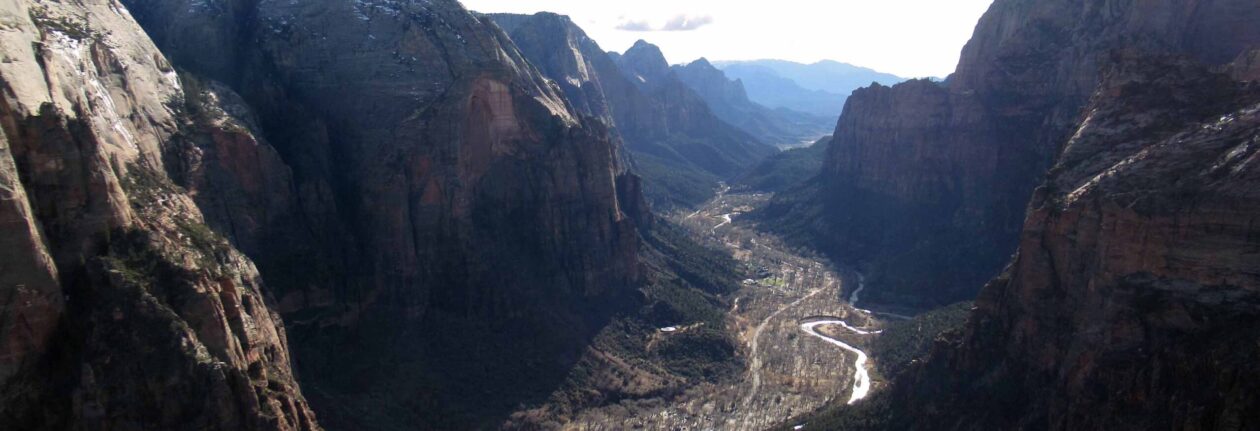Axum, Ethiopia
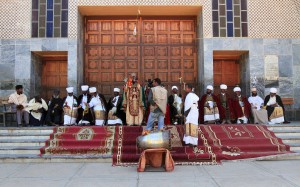
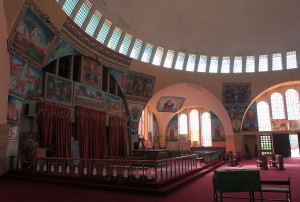
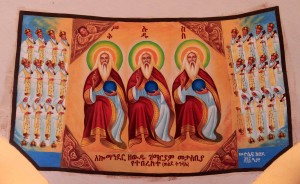
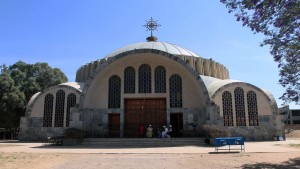
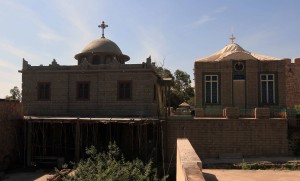
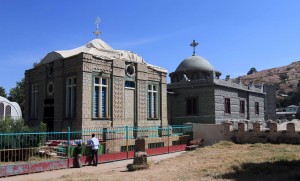
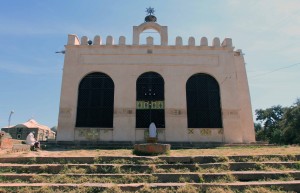
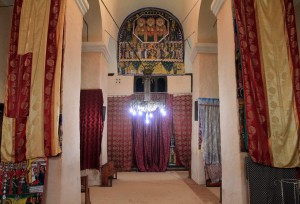
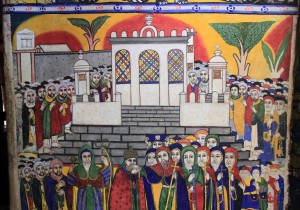
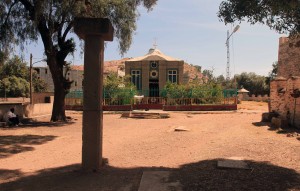
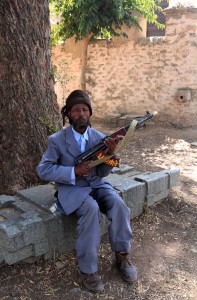
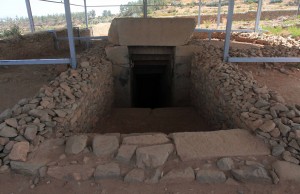
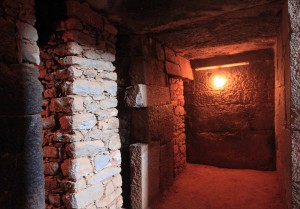
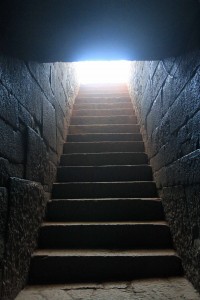
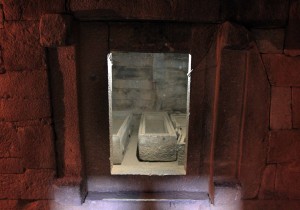
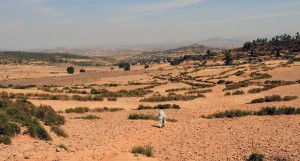
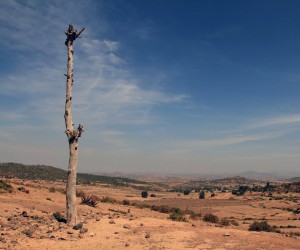
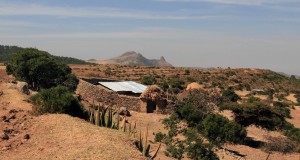
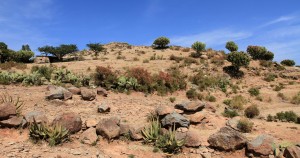
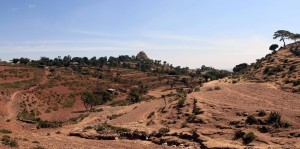
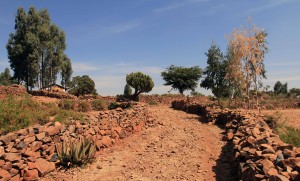
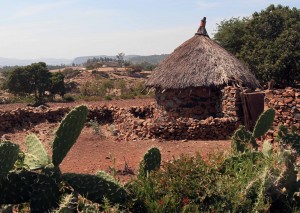
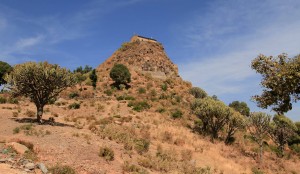
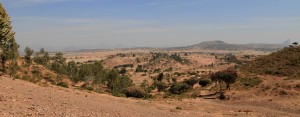
I woke up today, took a cold shower (since the water heater wasn’t working), grabbed my camera and tripod, and walked out of the hotel. I walked straight to the collection of Ethiopian Orthodox churches located next to the Northen Stelae Field in Axum (the same group I walked through yesterday, but without a ticket, and without entering inside any of the structures). This time, I bought my ticket and walked to the Church of St. Mary of Zion; in front of the church was an assemblage of seventeen religious figures and the two men in the center, dressed ornately and given thrones to sit on, gave speeches to a video camera and the small crowd that had gathered around; I watched for a short while, studying the priestly garb they were wearing, before walking on to the museum on site. The museum did not allow cameras inside, so I stowed them away in a locker and then proceeded to look around at the displays; inside was a collection items used for regular religious services (robes, incense burners, crosses, etc.), coronation crowns, some musical instruments, large Bibles, and some other interesting artifacts. After seeing the museum, I walked inside the Church of St. Mary of Zion and looked at all the paintings adorning the walls and the setup of the altar. I then walked to the Chapel of the Tablet, began to approach it, but was then stopped by an old man in a suit with an AK-47; I thought it was absurd to stop me from getting near the fence (I wouldn’t dare try entering it) when an Ethiopian father was standing right next to it as his son was banging a water bottle against a metal container on the inside, right outside the Holy of Holies (see photograph) – talk about disrespectful, but sure enough, it was permitted to continue. I later found out through an Ethiopian living in America (who acted as interpreter) and a guide who spoke some English, that there is an invisible line that no foreigner (or “farangī”) can cross (Ethiopians, including the American interpreter, can walk right up to it); I tried to get clarification on where this line is or why they have adopted such an obviously racist policy, but could not get an answer. Oh well, fuck it. Next, I walked inside the monastery and was able to view the paintings inside; these painting are covered by curtains and one man who understood no English lifted each curtain for me to see the artwork hidden behind it. After the monastery, I walked back to the entrance gate and then walked northward, past the reservoir known as Queen Sheba’s Bath (once again with bathers inside, thus why I have no photographs of this reservoir), and further north, down the desert road, to the tombs of King Kaleb and his son, Gebre Meskel, located right next to each other in the valley between Mai Qoho and the Bete Giorgis hills. Upon reaching the tombs, I first descended the stone steps to the dark chamber inside Gebre’s tomb; then I did likewise to explore Kaleb’s tomb. After that short visit, I took some photographs of the beautiful countryside, the terraced farms on the hillsides, and the distant peaks shrouded in dusty air. Then, I followed the dirt road on the north-side of Mai Qoho ridge to the Abba Panteleon monastery; I loved this walk through a pastoral arid landscape with no tourists, no touts, and few people (some herdsman with their animals and some children hoping to get pens or money out of me); I was glad to not have to walk back through Axum (the way I had traveled) and to instead be surrounded by the loveliness and purity of nature as opposed to the ugliness of man and his kind – this made me quite happy and relaxed my body and spirit. I continued along this road (which soon turned in to just a footpath), stopping frequently to take photographs, and took about an hour in the sun to reach the monastery. When I got there, I met a band of children sitting around inside; they told me the price of admission was 100 birr and that I could purchase a ticket inside the museum, which was closed; I decided not to wait around for the adult supervision to arrive and decided the small monastery and modest museum probably had little to offer; so I exited the grounds and enjoyed the view of the monastery, placed on top of a rock outcrop like a cherry on a steep mound of rocky road ice cream, from the outside. I then followed the path back down to Axum. Once on the major arterial road through the town, I entered inside one of the finer hotels and had lunch (beer and a pizza with onions, pineapple, tomatoes, olives, mushrooms, and meat sauce – they seem to love pizza in Ethiopia (with it on almost every menu), no doubt thanks to the past Italian occupation of this country). After lunch, I returned to my hotel room to relax and read. When it was dinner time, I walked to a nearby hotel and had a pleasant meal of a thin pepper steak with vegetables, French fries, and beer; I was going to order a small bottle of Axumite sweet red wine (another Ethiopian brand), but as I was studying the bottles (the waiter brought a small and large bottle) a Frenchman came over with his small bottle for me to try; he poured quite a large sample in my glass, probably hoping to rid himself from as much of it as possible, and I then gave it a taste – it was truly reprehensible; it tasted very sweet and sour, more like liquid candy than wine; I do believe it was worse than the North Korean, Mongolian, and Nepalese wine I had tried; quite a disappointment compared to the Ethiopian dry red wine I had last night which wasn’t very good, but still drinkable (I would’ve liked to have tried their white wines, which I suspect may have been better). Anyway, I finished my meal, walked back to my hotel room, and then finished reading ‘Across the River and Into the Trees’ – I’ll have to side with the critics on this one; I love Hemingway’s writing style, but I did not care for the story nor Colonel Cantwell’s relationship with Renata; perhaps this is my failing since I had read that this novel has been compared to Thomas Mann’s ‘Death in Venice’ (a film which I love – I haven’t read the book yet); however, I did like the Colonel’s frequent stops on the road to Venice, when he would look out at landscapes and towns, travel down memory lane, and remember the bloody battles that had taken place there (something that probably haunted and occupied much of Hemingway’s mind during his later trips to Italy and Spain). After finishing, the novel, I laid my eyes to rest and slept.
